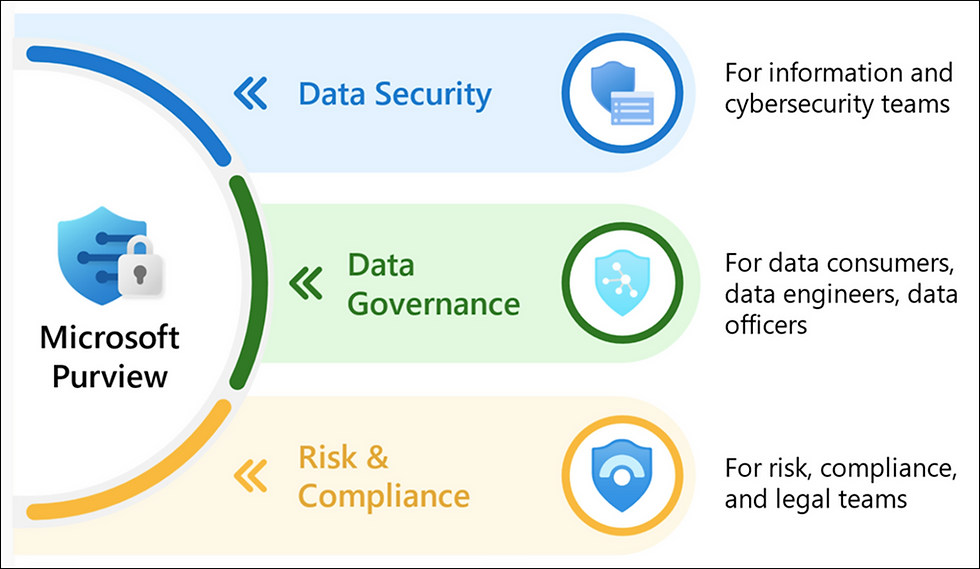Govern data seamlessly in new, comprehensive ways
- Tellistic

- Jul 16
- 2 min read
Data governance is how you ensure that organizational data is accurate, discoverable, trusted, and protected. With ever-evolving regulations and organizational policies, data governance is as critical as data security.
Managing the quality of your organization’s data is essential. This is even more important in the era of AI. Data professionals will most time spend their time simply finding, cleaning, and organizing data, instead of using the data that’s trusted and clean. Managing data quality is therefore time-consuming. Data governance solutions help you deliver a modern data governance experience to provide comprehensive data confidence, visibility, and responsible innovation by streamlining metadata from disparate sources and catalogues.

Map your data estate
The process of governing your organization’s data begins with mapping your entire data estate. This involves scanning all your assets and multi-cloud sources to capture all the metadata. The scanning will help you identify where sensitive data is stored in your data estate. The identification of your sensitive data and the subsequent data classification help your organization create an up-to-date map of your entire data estate.
Improve the health of your data
Mapping your organization’s goes in tandem with creating a searchable catalogue of your scanned data. A searchable catalogue helps you to curate your data, grant access to different data users, and improve the overall health of your data.
Data mapping and a unified catalogue help your organizations govern their data by creating a secure environment for data consumers to find valuable data. Also, it is easier to generate insights about how your organizations data is stored and used. Subsequently, with a well-defined data estate, it becomes easier to manage access to the data in your estate in a more secure way and at scale.
Principles of data governance
The right policies help you to achieve the core data governance principles. The five core principles are as follows.
Data curation: This is about organizing, annotating, and publishing your organizations data so that it is safely accessible, reusable, and protected.
Data access: This dwells on managing access to the data in your estate in a secure manner and at scale by implementing access policies.
Data discovery: Data consumers should be able to find the data they need for day-to-day business and innovation.
Data health: This is about ensuring data quality is maintained across your estate, and there is an active lifecycle keeping your organization’s data fresh and secure.
Data understanding: Data consumers should be able to make sense of the data they are interacting with. A unified catalogue adds quality descriptors to data that help users understand what the data is and how it should be used.
Conclusion
Data governance making sure that organizational data is accurate, discoverable, trusted, and protected. The core tenets of data governance cover data curation, access, discovery, health, and understanding. These goals are achieved by first mapping your entire data estate and subsequently building a searchable data catalogue of your scanned data.




Comments